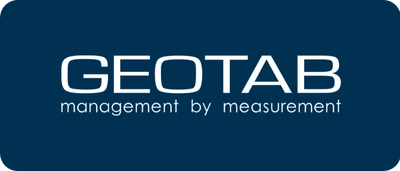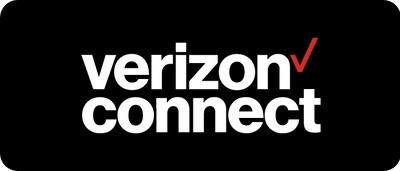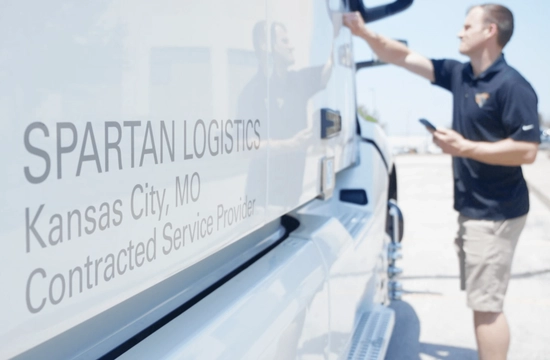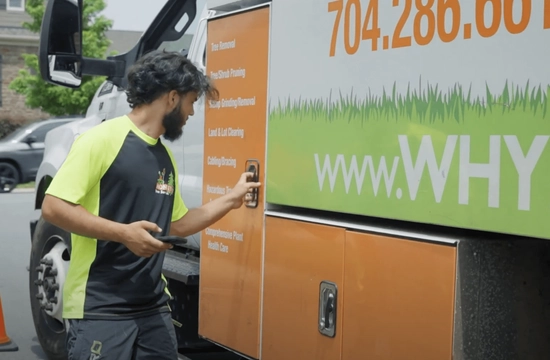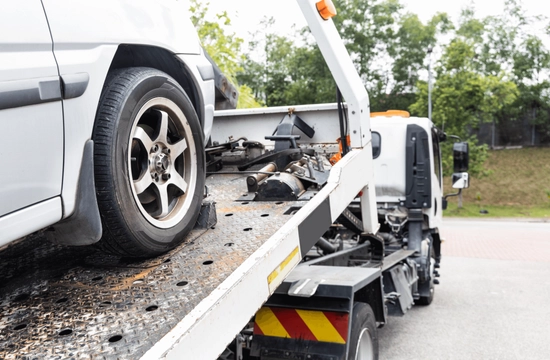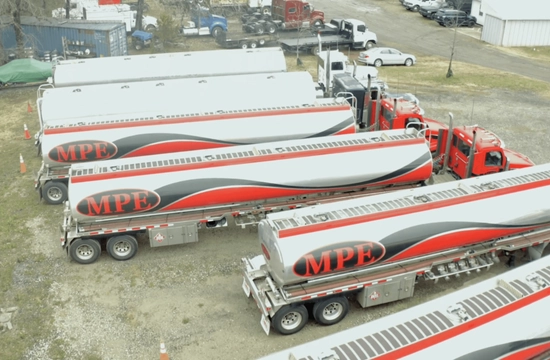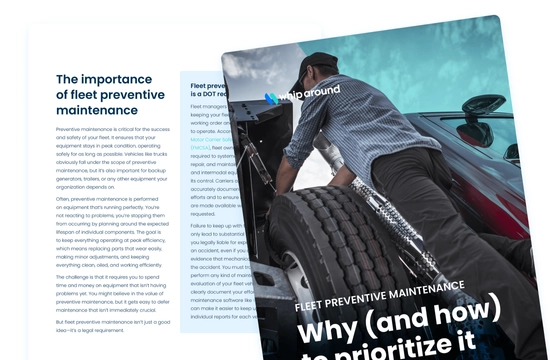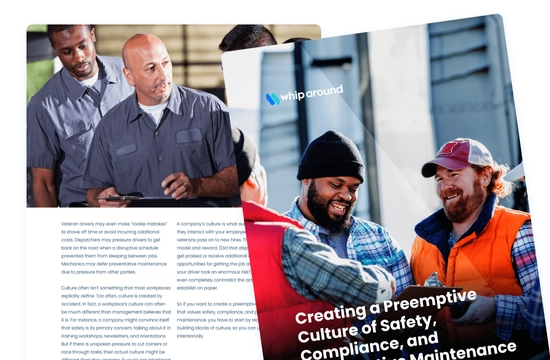- SolutionsMaintenance
Fleet maintenance software for vehicles and equipment
ComplianceEverything you need to keep your fleet compliant with the DOT
InspectionsVehicle inspection software that keeps you compliant and cuts costs
ReportingAccess the vital data you need to optimize the performance of your fleet
Fuel ManagementTrack fuel usage in real time and maximize profitability through fuel cost tracking
IntegrationsSee all - CustomersFeatured Case StudiesSee all
![Spartan Logistics]() Spartan Logistics
Spartan LogisticsSpartan Logistics is a safer, more efficient business by keeping their maintenance up and costs down with Whip Around.
View case study![Monster Tree Service]() Monster Tree Service
Monster Tree ServiceWhip Around gives Monster Tree Service visibility on vehicle & equipment location, condition, what work is due and what has been completed
View case study![Northwest Repossession]() Northwest Repossession
Northwest RepossessionNorthwest Repossession saves tens of thousands of dollars every year by staying totally compliant with Whip Around.
View case study![M. Pittman Enterprises]() M. Pittman Enterprises
M. Pittman EnterprisesThe team at M. Pittman turned to Whip Around for a digital solution to take the guesswork out of their preventive maintenance process.
View case study - ResourcesFeatured ContentSee all
![eBook: Fleet preventive maintenance: Why (and how) to prioritize it]() eBook: Fleet preventive maintenance: Why (and how) to prioritize it
eBook: Fleet preventive maintenance: Why (and how) to prioritize itEverything you need to make preventive maintenance a priority for your fleet.
View eBook![eBook: Creating a preemptive culture of safety, compliance, and preventive maintenance]() eBook: Creating a preemptive culture of safety, compliance, and preventive maintenance
eBook: Creating a preemptive culture of safety, compliance, and preventive maintenanceHow to build a preemptive culture of safety in six steps.
View eBookResource Type - Pricing
Preemptive Fleet Management: Creating a Culture That Prioritizes Safety, Compliance, and Preventative Maintenance

When your business involves operating vehicles and managing drivers, there’s a lot at stake. A single accident can have devastating consequences. But while we all recognize the cost of damaged or destroyed assets, lost time, lawsuits, and serious injuries, following protocols can often feel like a distraction from the work your team does every day. Red tape seems to slow down every process, and regulations often inhibit productivity:
- Vehicle inspections take time.
- Drivers may need to clock out in the middle of a job to stay compliant.
- Dispatchers may need to deal with the fallout from regulation-related delays.
- Mechanics might end up replacing parts that could’ve lasted for hundreds more hours.
The list could go on.
But safety, compliance, and preventative maintenance is about trading all of these short-term losses for long-term sustainability. You get more from your fleet. Your vehicles last longer. Your employees are healthier, safer, and less likely to burn out. And your business ultimately does better work—and more of it.
As a fleet manager, you don’t just want your employees going through the motions to meet the appearance of safety and compliance. You want them to recognize the value protocols bring to your organization, their career, and their wellbeing. You want their instincts and natural inclinations to prioritize safe and responsible choices, so they won’t take unnecessary risks—or ask others to do so—for short-term gains.
That can only happen when you’ve created a preemptive culture. A workplace where people develop and embrace a mindset that sees safe, compliant behavior as an asset and not a liability. Where everyone sees the rules not as shackles that hold them back, but as shields that empower them to protect themselves, each other, and your business.
But how do you get there? In this guide, we’ll explore the blueprint of a strong workplace culture and show you the six steps it takes to build a preventative culture. First, let’s unpack what “culture” looks like in fleet management.
What does “culture” actually mean?
There’s no shortage of online resources touting the value of “culture” in fleet management. Some even suggest that safety should be embedded in your culture. But “culture” is one of those corporate buzzwords that often feels like it doesn’t actually mean anything—or like someone really means something else, like policies.
Policies certainly influence your culture. But so does every employee you bring into your organization. Your culture is how your values are demonstrated in everyday decisions, interactions, and priorities. If speed and cost savings are some of your biggest values, for example, your drivers may be less likely to take the time they need to do things safely. Veteran drivers may even make “rookie mistakes” to shave off time or avoid incurring additional costs. Dispatchers may pressure drivers to get back on the road when a disruptive schedule prevented them from sleeping between jobs. Mechanics may defer preventative maintenance due to pressure from other parties.
Culture often isn’t something that most workplaces explicitly define. Too often, culture is created by accident. In fact, a workplace’s culture can often be much different than management believes that it is. For instance, a company might convince itself that safety is its primary concern, talking about it in training workshops, newsletters, and orientations. But if there is unspoken pressure to cut corners or race through tasks, their actual culture might be different than they imagine. If you’re not intentional about the culture you’re creating, you may end up with a culture you don’t want.
A company’s culture is what outsiders notice when they interact with your employees. The things your veterans pass on to new hires. The behavior you model and reward. (Did that dispatcher and driver get praised or receive additional compensation or opportunities for getting the job done, even though your driver took an enormous risk?) And it can even completely contradict the actual policies you establish on paper.
So if you want to create a preemptive culture that values safety, compliance, and preventive maintenance, you have to start by recognizing the building blocks of culture, so you can use them intentionally.
The building blocks of a strong workplace culture
In order to design a strong workplace culture that encourages drivers, mechanics, dispatchers, fulfilment specialists, and other employees to value protocols, you need to ensure your culture has the right ingredients. If you want people to embrace a safety mindset and not simply “follow the rules,” here’s what you need.
Clearly defined organizational values
Every organization has values they care about more than others. Yours might be something like excellence, speed, and integrity. Defining your company values can easily feel like meaningless corporate exercise, but it can be risky to let your values take shape organically. When you can clearly state your values, it becomes so much easier for you and your employees to anchor every decision in something your company has chosen to prioritize.
Defining your values is only useful if these are values you actually hold or aspire to hold. And whether they’re aspirational or not, these values should be clearly visible in your policies and decisions.
For example, if you want safety and compliance to be a priority, it’s worth thinking about that when it comes to things like your employee benefits package and policies surrounding time off. You might value safety and compliance in theory, but if your employees are incentivized to find loopholes in protocols or discouraged from taking the time they need to recover and drive safely, these values aren’t going to manifest in your business.
Similarly, if preventative maintenance is nested under a value like “excellence,” or “quality,” does your budget reflect that? How about your parts inventory?
Defining your organization’s values should trickle down into more tangible expressions of your culture.
Transparent, authentic leadership
In work environments, it’s easy to make exceptions and bend the rules for people in leadership. But employees notice when there’s conflict between your actions and your stated values. And when employees have no say in a decision (because it’s beyond the scope of their role, authority, experience, and expertise), they may feel like the rationale is simply none of their business. But if you want to create a healthy workplace culture where people think about situations the way you do and connect their own actions to company values, they need to understand your reasoning.
Sometimes you really do just need everyone to accept your decision and move on. But when you make time for explanations, everyone’s ability to translate values into action improves. Talking through decisions empowers your team to replicate your decision-making process for themselves. It also makes it easier for them to accept your judgments in the future—because you’ve demonstrated that your choices are rooted in values they understand and care about.
Transparent, authentic leadership is crucial for cultural values to take root in your organization.
Opportunities for meaningful dialogue
Your workplace culture will never be healthy if everyone feels like they can’t contribute to conversations or provide feedback based on their experience and position. There are countless everyday decisions that may require you to make exceptions or recognize how your values could disrupt operations. And allowing employees to bring these up and talk through challenges could be key to getting them “on your side.”
For example, you might feel like a new fleet maintenance solution like Whip Around aligns with your values and would fit right into your culture, but individual employees may have all kinds of questions about what a change like that means for their role. Through open conversation, you could help them see how things like taking daily photos of their vehicle makes it easier to actually document inspections and gets them off the hook for damage they weren’t responsible for.
Want to learn more about how to navigate conversations about big fleet management decisions? Check out The Fleet Manager’s Guide to Getting Team Buy-in for New Technology.
Keep in mind, your employees may not be used to an environment where they’re free to ask questions and contribute. You may need to stimulate conversations by thinking about some of the common scenarios or challenges they face, then asking them to share the best way to address those situations using relevant protocols and your values as guides. This also gives you an opportunity to demonstrate how you and others will respond to wrong answers, which has a huge effect on future participation.
As much as possible, try to avoid heavy-handed leadership. Find creative ways to listen better and create effective and meaningful dialog.
Models for how to handle mistakes
How you respond when employees make mistakes—and how you handle your own mistakes—has a huge impact on your company culture. Are you creating an environment where people own their mistakes and feel comfortable sharing and learning from them, or are you teaching people to hide their mistakes and get defensive when caught?
Errors are inevitable. And everybody makes them. How you respond to your own mistakes and ones that come into your orbit has an immense influence on how your employees react. Is this a teachable moment and an opportunity for everyone to learn something? How do you react when someone identifies something you did wrong?
Accepting and learning from missteps doesn’t mean they don’t carry consequences or that you simply have to accept systems and processes that enable them. But once you’ve dealt with the immediate fallout, you may need to take more time to diagnose why it happened, explain the impact to other employees and operations, and problem solve with your drivers, dispatch team, mechanics, etc.
Attentiveness toward workplace trends
In any organization, patterns of behavior will emerge as employees learn to navigate common situations and interactions. If you want to intentionally cultivate a particular workplace culture, you’ll need to pay attention to these trends and prune out any that clash with your intentions.
For example, you may notice drivers take too long to report DTC codes, which increases the likelihood of more serious problems. This may mean investing in solutions that automatically relay the relevant information to the shop and administrators.
Or you might find that veteran drivers are ridiculing new drivers for their mistakes, many of which are borne out of inexperience. Even when you model the behavior you want to see, some employees are bound to react the same as they always have—or based on what’s been modelled to them by other veterans, managers, and employers throughout their career.
Since you have a higher-level view of the fleet and your personnel, you may notice trends that are more rooted in data. Your telematics software might indicate that drivers are driving too fast on particular routes to make up for lost time, and that they’re also often braking too hard as a result, increasing wear and tear on your equipment and the risk your organization takes daily.
When you’re aspiring to build a specific culture, you need to be vigilant about trends and patterns that undermine your intentions. And each time you notice something that needs to change, it’s an opportunity to discuss and reinforce that aspirational culture.
Six steps to building a preventative culture
It might feel like safety, compliance, and preventative maintenance are too disconnected for you to build a culture around all three. But while they involve different roles and processes, they all stem from the same concern: attentiveness to current situations in order to prevent future problems.
Want to create a preemptive culture in your workplace? Follow these six steps.
Step One: Get buy-in from leadership
You’ll never be able to embed safety, compliance, and preventative maintenance in your culture if you can’t get leadership onboard. Executives and fellow managers need to be aligned that these are mission critical areas that need to be baked into your policies and reinforced through their decisions and interactions with employees.
People will notice when other leaders reward risky behavior, take advantage of compliance loopholes, or dismiss preventative maintenance, and that behavior ripples throughout teams and departments creating pockets of people whose experiences with other leaders clash with your expectations.
Getting other leaders to embrace this initiative will require you to let them participate in the process and prepare to address their concerns head on. Some leaders may be more preoccupied with the immediate impact on quarterly performance and revenue than the long-term health of your business. You may need to pull reports on turnover, unscheduled downtime, compliance violations, and the costs associated with these problems a preventative culture helps alleviate.
If other managers are skeptical about how it will impact their teams, make a point of meeting with them to hear their concerns, and work on a solution together. You may even want to bring some key team members on board early to troubleshoot specific conflicts between the roles you manage and the roles you don’t.
Ultimately, you’ll need people in leadership to support, advocate, and adopt this culture as their own before it can really take hold in the organization.
Step Two: Put preventative policies in place
Your values simply have to come through in policy, or you’re inevitably going to have conflicts between what you profess to value—in this case, safety, compliance, and preventative maintenance—and the policies that dictate how your employees need to respond to various situations and how you’ll handle their failure to follow those policies.
This could mean updating daily inspections in a way that reinforces your values. Instead of simply requiring the bare minimum for compliance, your inspections should reflect your commitment to safety and preventative maintenance. For instance, you might use Whip Around’s customizable inspection forms to upload pictures of tire tread once a week or require a photo of the cab to demonstrate that drivers are maintaining a clean and organized workspace.
You may also want to set standards for the time between logged faults and repairs. By making this a metric that gets discussed, it becomes a value that is reinforced. This is another area where Whip Around comes in handy. As soon as an inspection reveals a fault, you’re alerted and can easily create a work order to get it fixed. But that happens behind the scenes, and you want to ensure that your team understands that this quick turnaround is part of your preemptive strategy.
Step Three: Equip people with the tools they need to succeed
Imagine if you told your drivers they need to drive slower to decrease the likelihood of accidents and reduce wear and tear on brakes—but they didn’t even have a speedometer. It would be absurd. And they’d have to invent bizarre workarounds to this simple problem that should’ve been solved by basic equipment.
In fleet management, you have a wide range of technological solutions that can help your organization meet safety targets, simplify compliance, and streamline preventative maintenance. Many of these solutions are interoperable by design and easy to integrate with the techstack you already use every day.
You can’t say that you’re creating a preventative culture without investing in tools that help your employees identify and diagnose problems, or perform tasks efficiently and accurately. Your tech and equipment will either reduce or increase friction as your employees try to align with your priorities.
If you’re still using paper forms to fill out inspection reports, you’re making it easy for drivers to pencil whip forms and increasing the likelihood that time-sensitive information gets lost in a stack of paper or buried in a folder. You’re likely deferring some preventative maintenance by default, because your mechanics haven’t even seen the work that needs to be done before they’re occupied with the rig in their bay.
This is one of the main reasons fleet managers turn to Whip Around. Our simple, intuitive app replicates any paper forms your team needs to fill out and ensures the right people get notified when they’re complete. While the forms are easy to fill out, they can also physically require your drivers to photograph parts of the vehicle, demonstrating that they’re actually performing a 360º inspection using our mobile app.
Step Four: Make training a regular part of the culture
You and your veteran employees can spot warning signs of larger problems a lot faster than those with less experience. Whether you’re watching someone attempt a difficult maneuver, recognizing symptoms of wear and tear on a piece of equipment, or identifying mistakes on paperwork that don’t meet regulatory standards, these are insights that should be passed onto other employees every chance you get. The best opportunities to facilitate these learning moments are in training sessions, when everyone is present and you can use examples and answer questions.
Trainings are also a valuable time to address mistakes that come up throughout the month. You can’t always discuss underlying issues or explore how those mistakes represent a breakdown in your values and desired culture, but it’s critical that employees can see how intentionally or not, the mistake put someone’s safety, your organization’s compliance, or a vehicle’s preventative maintenance at risk.
Step Five: Periodically assess your progress
Your culture isn’t something you “set and forget.” It’s ongoing. You’ll need to adapt to new circumstances and examine whether your policies, decisions, and actions are aligning with your intentions. Are your employees actually getting better at preemptively addressing small problems before they become larger issues?
Maintaining a culture takes vigilance. So auditing is a must. You’ll want to look at measurable data like accidents, compliance violations, and unscheduled downtime to see how (and if) it’s changed over time. But you’ll also want to evaluate how these changes are playing out with your employees. If you don’t set aside time to discuss it with them, your drivers, dispatchers, mechanics, and fulfilment specialists may not feel like there’s an appropriate time to bring up conflicts that have arisen or situations where it’s especially difficult to prioritize these values.
Step Six: Be clear about how you’ll respond to issues
Sometimes you’re going to have problems, policies, and people that simply need correction. The whole mindset behind this preventative culture you’re trying to create is rooted in a desire to keep small problems and inefficiencies from getting bigger. You can’t ignore them. And if you don’t clearly lay out how you’ll respond to them, they may become more widespread or undermine employees’ ability to embrace your values.
A dispatcher pressures a driver to stay on the road when they clearly shouldn’t be behind the wheel, and the driver completes a time-sensitive delivery without getting into an accident. How will you respond? Does whether the decision was wrong depend on the outcome? Or is it still a violation of your values that put your driver and your organization at greater risk than a delayed delivery would have? What should your dispatcher do in this situation?
When you clearly define how you’ll correct problems, your employees will feel more comfortable sharing issues with you, and ultimately, the more willing they’ll be to embrace a preventative culture.
Build your preemptive culture with Whip Around
You can’t create a culture that takes precautionary measures seriously without getting everyone on board. And it won’t happen by accident. Creating a culture that takes preventative measures seriously requires forethought, planning, and communication. But once you have a culture like this in place, you’ll end up saving both time and money. And because expectations are clear, communication is valued, and safety is prioritized, your turnover will be greatly reduced.
If you’re interested in discovering how Whip Around can help you build a preemptive culture by managing preventative maintenance, helping you stay DOT-compliant, and making the work-order process run more smoothly, schedule a free demo or contact us today.

